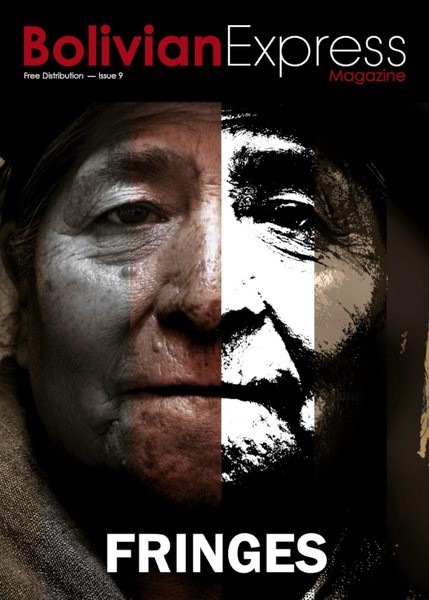
Saturday May the 21st marked the fifth annual ‘Noches de Museos’ in La Paz. Every year, the doors of museums and galleries are left open from the evening, through the wee hours of the morning, and until the amanecer to give the public free access to the artistic side of the city for one special night. This year’s Night of the Museums was bigger than ever and drew crowds almost too large for the narrow street where the event first originated, the supposedly haunted calle Jaen.
All types – from parents and toddlers to hippies and three-piece suits – mingled in the queues to get into the museums. For those less interested in the local history or too impatient to wait out the lines, vendors and musicians filled every empty crevice on the cobbled road. Nothing can beat enjoying a hot api while shopping for local handicrafts to the sound of an acoustic guitar on a chilled Bolivian night.
While the street was undoubtedly teeming with people, the crowds flowed with ease and affability. The real highlight of the night was the local photography, paintings, and handicrafts on display in the galleries hidden between the museums. But don’t get carried away by the feelgood ambiance of the streets; the museums themselves are not to be missed. While they are open to the public all year round, the galleries fill themselves to the brim for this event to help boost awareness for the city’s artistic activities and cultural heritage. Once a year, for one night only, some of the most remarkable works produced in the city come together in one single place.
While you’ll have to wait for next year’s Night of the Museums to get the full experience, you can visit the four municipal museums (Museo Costumbrista Juan de Vargas, Museo del Litoral Boliviano, Museo de Metales Preciosos Precolombinos, and Museo Casa de Murillo, all located on calle Jaen) any day but Monday, or the Nacional Museum of Art (calle Comercio) every Thursday. For free!
Part 1
As you wake up early in the morning, you experience your first adrenaline rush as you understand that you’re about to start one of the most intense days of your life; or at least, that’s what you’ve been told and that’s how you imagine it, thinking how you’ll soon be riding down the road as if falling from the sky.
Finally, it’s time to go: the Gravity Assisted Mountain Biking bus arrives, its roof covered with what seem like enough bikes for an entire football squad (plus subs, plus entourage). As you hop onboard and look out of the window you’re overcome by pangs of adrenaline: you’re feeling strangely excited and scared at the same time. But hold your horses, it takes a while to make it to the top of the Cumbre, whose deceptive mist artfully hides what lies below.
As we get there, the guides start to prepare the equipment: knee pads, elbow pads, gloves, helmets. All the kit makes you not only virtually unrecognisable - it also makes you feel like a professional warrior - such is the level of protection. According to your size, you’re then assigned a bike which feels so perfect that when you mount it you feel ready to face any obstacle that lies ahead. Dragons, carnivorous plants, pirates - bring it on. The route starts with the chunky wheels gliding down the asphalt road. The army of bikes invades the road followed by crazed war-cries from the troupe. What an amazing feeling: the curves, mist and frozen air come together in an experience which seems otherworldly. There’s something not quite right though - perhaps you assumed you’d be riding down mud and stones the size of heads; this almost seems too easy in comparison. But as the guide stops at the end of the asphalt road, you’re just able to glimpse a small dirt track - a promise of what lies ahead. As you begin your second descent, patches of green emerge from round every corner and through the thick fog, which will soon envelop you completely. Before you know it you’re in the belly of a cloud and halfway down the camino de la muerte. Read our next issue to discover where you’ll end up next.

 Download
Download





















